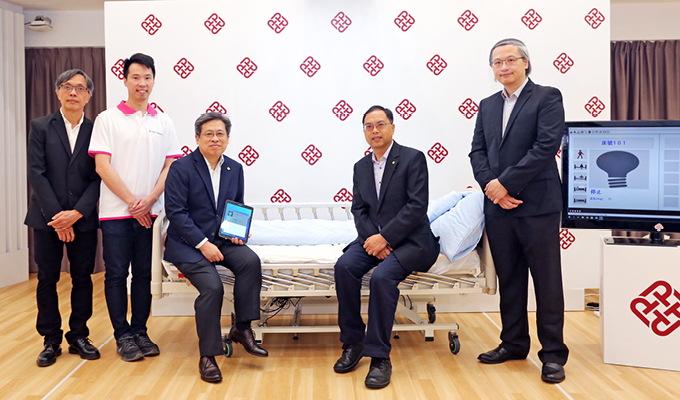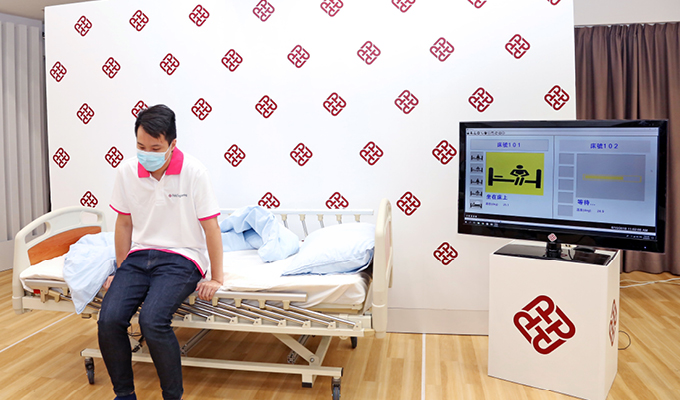

Falling and wandering away are the primary risks faced by elderly with dementia at nursing homes. To this end, Prof. Zheng Yong-ping of the Department of Biomedical Engineering developed the multi-functional monitoring system eNightLog for tracking the elderly’s respiration and activities in bed. The system can also lessen the workload of healthcare personnel.
1. What prompted you to invent eNightLog?
It is projected that the number of people aged 65 or above in Hong Kong will reach around 2.5 million by 2040 and that is about one-third of the then overall population. Among the elderly at that time, some 332,700 or one out of 10 would suffer from dementia, tripling the figure in 2009.
In view of this, making use of assistive and rehabilitation health technologies, I want to develop a system for nursing homes so as to help improve the elderly’s quality of life, lessen healthcare personnel’s workload and contribute to building an age-friendly society.
2. How does the eNightLog system work?
Based on the PolyU-developed innovative algorithm, the non-contact and non-invasive eNightLog system is embedded with event sequence tracking and different kinds of remote sensing and imaging technologies. The system is installed with Near Infrared 3D sensor to track the elderly’s positions and postures (lying down, sitting on bed or bedside, standing beside the bed, left the bed) to help lower the risk of falling or wandering away. In addition, Ultra-Wideband Impulse Radar sensor can detect small motions like respiration to monitor the elderly’s health condition and sleep quality. The Environment sensor also provides ambient measurements and control functions, such as room temperature and light control.
3. When and how will the system alert caregivers?
The activity status and alarm for multiple residents of nursing homes are transmitted in the form of text, icons or processed infrared images to the caregivers’ computers or mobile devices. Signals detected beyond the pre-set normality range will trigger the alarm for caregivers to take immediate actions.
4. What were the results of the system’s clinical trial?
We have tested the use of 17 eNightLog systems in a nursing home for two months. During this period, 380 incidences of elderly leaving the bed alone were recorded and all of them were successfully detected by the systems. In addition, there were 525 events of caregivers entering the monitoring zone and accompanying the elderly to leave the bed, and they were 100% detected by the systems.
5. Any future development plans for eNightLog?
This innovation has won the Gold Medal at the 46th International Exhibition of Inventions of Geneva. The research team plans to extend its functions to detect heart rate and body temperature, and connect the system with smart devices like electronic diaper to help caregivers take better care of the elderly.